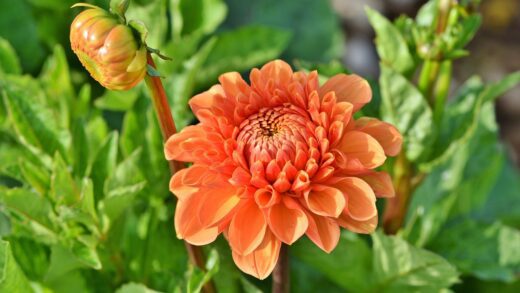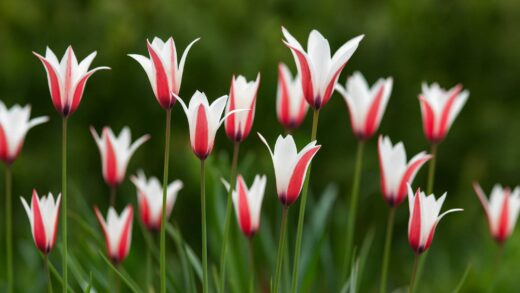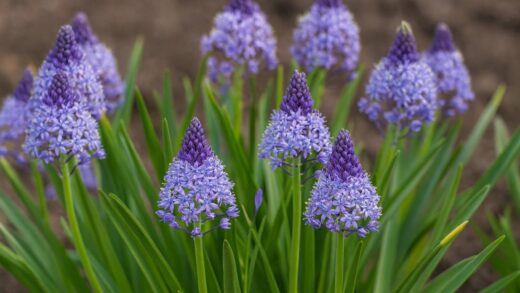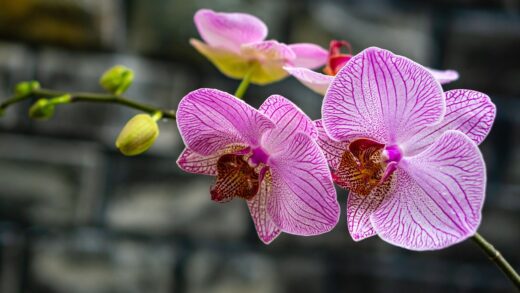The light requirement of the Jerusalem artichoke is a defining characteristic of the plant, deeply rooted in its evolutionary history as a native of the sunny North American prairies. This plant is a true sun-worshipper, and providing it with an abundance of direct sunlight is one of the most critical factors for achieving a successful and high-yielding crop. While it can exhibit some tolerance for less-than-ideal conditions, its growth, stature, and, most importantly, its ability to produce large, numerous tubers are all directly proportional to the amount of light it receives. Understanding this fundamental need for sun is essential when choosing a planting location and managing the plant throughout its life cycle.
For optimal performance, a Jerusalem artichoke patch should be situated in a location that receives a minimum of six to eight hours of direct, unfiltered sunlight per day. This is often referred to as “full sun” exposure. In these conditions, the plant will grow to its full, impressive height with thick, sturdy stalks and a dense canopy of large, healthy leaves. This extensive leaf surface area is the plant’s engine, and maximizing its exposure to sunlight allows for the highest possible rate of photosynthesis. This, in turn, generates the maximum amount of energy that the plant can later divert to storage in its underground tubers.
While the plant can survive in partial shade, its performance will be noticeably compromised. With less light, the plants will become “leggy” or etiolated, meaning they will grow taller and more spindly as they stretch in search of more light. The stalks will be thinner and weaker, making them much more susceptible to being bent or broken by wind. The leaves will be smaller and may have a paler green color, and the overall biomass of the plant will be reduced. This reduction in the plant’s photosynthetic capacity directly impacts the final harvest.
The consequences of insufficient light are most evident when it comes time to harvest. A plant grown in partial shade will produce a significantly smaller yield of tubers compared to one grown in full sun. The tubers that do form will be fewer in number and will not reach their full potential size. The plant’s energy budget is a zero-sum game; if it has to expend more energy on creating tall, weak stems to reach for light, and if its smaller leaves are producing less energy overall, there is simply less surplus energy available to send down to the tubers for storage. Therefore, when planning your garden, reserving your sunniest spot for the Jerusalem artichoke is a decision that will pay great dividends at the end of the season.
The importance of full sun
The requirement for full sun is directly linked to the Jerusalem artichoke’s identity as a member of the sunflower family (Helianthus). Like its famous relative, the plant is genetically programmed to thrive in open, sun-drenched environments. Full sun exposure drives the process of photosynthesis, the biochemical reaction where the plant uses light energy to convert carbon dioxide and water into glucose—the plant’s primary source of fuel. A plant situated in full sun can operate its photosynthetic “factory” at peak capacity for the entire day, producing a large surplus of energy beyond what it needs for its daily maintenance and growth.
More articles on this topic
This surplus energy is the key to a bountiful harvest. Throughout the summer, the plant uses the energy from photosynthesis to build its impressive structure of stalks and leaves. Then, as the days begin to shorten in late summer, a hormonal signal tells the plant to start preparing for winter by storing this surplus energy. The energy, in the form of sugars, is transported from the leaves down to the underground rhizomes, where it is converted into inulin and stored in the newly forming tubers. A plant that has been bathed in sun all season has a much larger energy reserve to draw upon, which directly translates into bigger and more numerous tubers.
Full sun also contributes to the overall structural integrity and health of the plant. Sunlight helps to strengthen the plant’s cell walls, leading to thicker, more robust stalks that are better able to support the heavy foliage and resist damage from wind and rain. Furthermore, direct sunlight on the leaves helps to quickly evaporate morning dew and moisture from rainfall. This reduces the amount of time the leaves are wet, creating a less hospitable environment for the development and spread of common fungal diseases like powdery mildew and rust. A sun-drenched patch is therefore often a healthier patch.
When selecting a site, it is crucial to consider the path of the sun throughout the entire day and across the whole growing season. Be mindful of potential obstructions such as buildings, trees, or other tall garden structures that could cast a shadow on the patch during parts of the day. Because Jerusalem artichokes grow so tall themselves, they should ideally be planted on the north side of the garden, where they will not cast a shadow on smaller, sun-loving plants. Prioritizing a location with uninterrupted, all-day sun is the most fundamental step you can take to ensure your Jerusalem artichoke plants can reach their full productive potential.
Impact on plant growth and stature
The amount of available light has a profound and visible impact on the physical growth and stature of the Jerusalem artichoke plant. In a full-sun environment, the plant receives all the light energy it needs, allowing it to grow in a balanced and robust manner. The stems will be thick, sturdy, and capable of supporting the large, heavy leaves and eventual flower heads. The internodes—the spaces on the stem between the leaves—will be relatively short, resulting in a dense, bushy plant with a massive canopy of foliage. This compact, strong structure is the hallmark of a healthy plant growing in ideal light conditions.
More articles on this topic
In contrast, when a Jerusalem artichoke is grown in partial shade or in an overcrowded patch where it must compete for light, it exhibits a classic shade-avoidance response known as etiolation. The plant will actively stretch towards the available light source, resulting in significantly taller but much weaker growth. The stems will be thinner and more brittle, and the internodes will be much longer, giving the plant a sparse and “leggy” appearance. This is the plant’s survival strategy to raise its leaves above its competitors and into the light, but it comes at the cost of structural stability. These etiolated plants are far more likely to be damaged or knocked over by wind.
This difference in growth habit is regulated by plant hormones, particularly auxins, which are sensitive to light. In low-light conditions, these hormones promote cell elongation, causing the stem to stretch rapidly. While this helps the plant in its quest for light, it diverts a significant amount of the plant’s limited energy resources away from other important functions. The plant prioritizes reaching the light above all else, which means less energy is allocated to developing a strong root system, strengthening the stem, or storing reserves for tuber formation.
Therefore, observing the stature of your Jerusalem artichoke plants can serve as a direct indicator of whether they are receiving adequate light. If your plants are standing tall on thick, robust stems with dense foliage, you have likely chosen an excellent location. If, however, they appear excessively tall, thin, and spindly, and seem unable to support their own weight, it is a clear sign that they are light-deprived. This visual cue can help diagnose yield problems and inform the decision to move the patch to a sunnier location in a future season.
Effects of light on tuber formation
The influence of light on Jerusalem artichoke plants extends far below the soil surface, having a direct and critical effect on the process of tuber formation and development. Tuberization—the initiation and growth of tubers—is primarily triggered by photoperiod, which is the relative length of day and night. Jerusalem artichokes are short-day plants, meaning that they begin to form tubers in earnest when the days become shorter in late summer and early autumn. However, the size and quantity of the tubers they form are directly dependent on the amount of energy the plant was able to store during the long, sunny days of summer.
The leaves of the plant are the solar panels that produce all the energy the plant will use. During the long days of June, July, and August, a plant in full sun is photosynthesizing at its maximum potential, creating a large surplus of sugars. This surplus is the fuel for tuber growth. When the shortening days signal the plant to begin tuber formation, this accumulated energy is mobilized and transported from the leaves down to the rhizomes. A plant that has been in the sun all day, every day, has a massive energy reserve to send underground, resulting in a large number of big, dense tubers.
Conversely, a plant grown in insufficient light has a much smaller energy-producing factory. Its leaves may be smaller, and they are operating at a lower capacity. It produces enough energy for its basic survival and to grow its spindly stem, but it creates very little surplus. When the short-day signal for tuber formation arrives, there is simply not much stored energy to send to the tubers. As a result, the plant will produce far fewer tubers, and the ones it does produce will be small and underdeveloped. This is the most significant consequence of inadequate light exposure and the primary reason why full sun is non-negotiable for a successful harvest.
It is also important to note that the tubers themselves must be protected from light. While the leaves require sun, the tubers require darkness. If the developing tubers near the soil surface are exposed to sunlight, they can develop a green tinge, similar to potatoes. This greening indicates the presence of solanine, which is bitter and mildly toxic. The practice of “hilling” or “earthing up”—drawing soil up around the base of the stems during the growing season—helps to keep the developing tubers covered and in the dark, ensuring they remain palatable and safe to eat.
Managing suboptimal light conditions
While planting Jerusalem artichokes in full sun is the ideal, sometimes gardeners must work with less-than-perfect conditions. If your only available space receives partial shade, there are a few strategies you can employ to mitigate the negative effects, although it is important to have realistic expectations about the final yield. The first step is to maximize the light that is available. This might involve pruning overhanging branches from nearby trees or shrubs to allow more sunlight to reach the patch, especially during the middle of the day. Even an extra hour or two of direct sun can make a noticeable difference.
When planting in a site with suboptimal light, it is even more crucial to manage plant density. Overcrowding will exacerbate the competition for the limited available light. You should increase the spacing between plants to at least 45-60 centimeters to ensure that each plant has as much access to the sky as possible and is not being shaded by its neighbors. Thinning the shoots in the spring becomes a critical task in a partially shaded location. Removing weaker shoots allows the remaining plants to receive better air circulation and a larger share of the available sunlight.
Plants grown in lower light conditions will inevitably be taller and weaker, making them highly susceptible to wind damage. Providing physical support is an effective management strategy in these situations. You can install sturdy stakes next to each plant and loosely tie the stems to the stakes as they grow. Alternatively, for a larger patch, you can create a support system by running rows of strong twine between posts set at either end of the bed. This will prevent the fragile, etiolated stems from snapping in strong winds, which would further reduce the plant’s already compromised ability to photosynthesize.
Finally, you must adjust your harvest expectations. A Jerusalem artichoke patch grown in partial shade will not produce the same volume or size of tubers as a patch grown in full sun. The harvest will be smaller, and this is an unavoidable consequence of the reduced light energy. However, by carefully managing spacing, providing support, and maximizing the available light, you can still achieve a modest and worthwhile harvest. Understanding the plant’s fundamental need for sun helps explain the results and informs better site selection for future growing seasons.


















